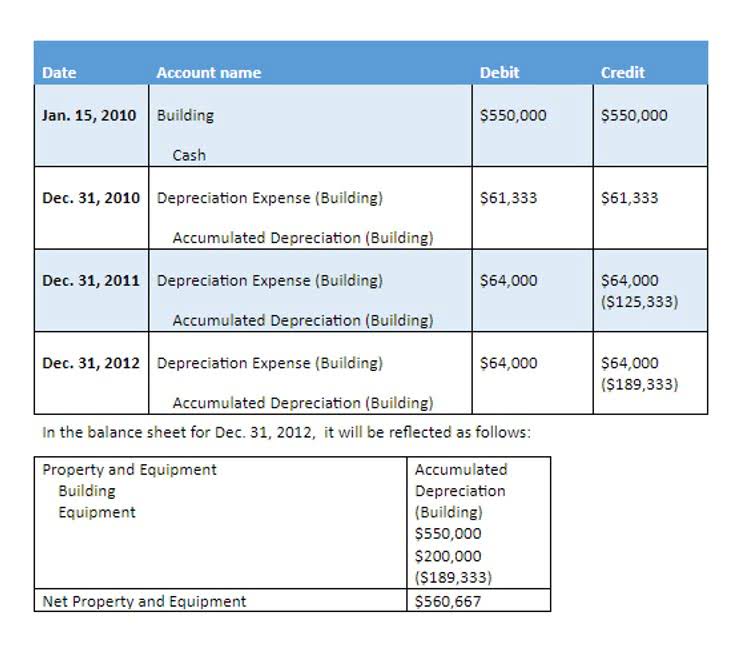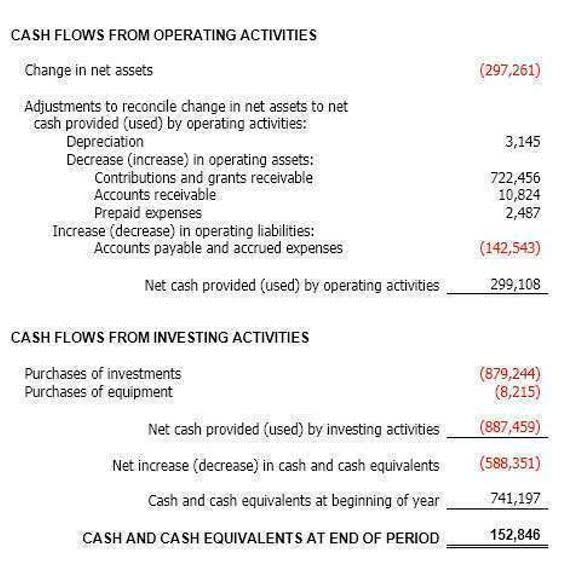Browse Unofficial New York Codes, Rules and Regulations

The next step involves transferring the journal entries to the general ledger. Here, transactions are categorized into respective accounts, providing a clear view of each account’s activity over a period. There is no universal agreement as to which collection of business documents comprise a comprehensive https://www.bookstime.com/ set of accounting records. Becoming a professional bookkeeper typically requires a high school diploma or equivalent. However, some positions might require additional formal training or certifications. This can be achieved through a bookkeeping diploma or a degree in finance, accounting, or business.
Process of Records Management
Ideally, deletion ability would be a permissions based affair or one with even stronger security protocols, such as part of a privileged password management system. This may require both a) creating new processes record keeping for small business and procedures, and b) adapting and editing old processes and procedures. In light of legislation like GDPR in Europe, you will also want to determine how long you can keep customer information.

Why is financial record accuracy critical for business decision-making and compliance?
Through financial ratio analysis, financial accounting allows these parties to compare one balance sheet account with another. For example, the current ratio compares the amount of current assets with current liabilities to determine how likely a company is going to be able to meet short-term debt obligations. U.S. public companies are required to perform financial accounting in accordance with generally accepted accounting principles (GAAP).
Can I do my own bookkeeping for my business?
Financial analysis and reporting are key components of this process, offering insights that guide strategic planning and operational effectiveness. Understanding the accounting cycle is crucial for business owners, stakeholders, and financial professionals. It provides a clear and structured way to record financial activities, ensuring compliance with accounting standards and legal requirements. This cycle also helps in making informed business decisions based on accurate financial data. Before computers and servers became widespread, accounting records were recorded on ledger paper by hand. Each account was manually transferred from the general ledger to T-accounts in order assembly reports and financial statements.
Records life-cycle
- Physical records are those records, such as paper, that can be touched and which take up physical space.
- Businesses should ensure that each transaction, whether it’s income or an expense, is recorded timely in the books.
- Effective techniques for preserving the integrity of financial data include regular backups, secure storage of both digital and paper records, and updating systems to protect against cyber threats.
- Continuous professional development is vital in keeping accounting staff updated with the latest accounting standards, technologies, and best practices.
- Empower your team with SafetyCulture to perform checks, train staff, report issues, and automate tasks with our digital platform.
- This step entails locating a suitable location for storing the records and organizing them to be easily accessible and retrievable.
- This data can encompass every aspect of a business—from financial transactions, employee records, and customer interactions to regulatory compliance documentation.
Charlene Rhinehart is a CPA , CFE, chair of an Illinois CPA Society committee, and has a degree in accounting and finance from DePaul University. In addition, becoming a certified bookkeeper can offer more job opportunities. ✅ All InspiredEconomist articles and guides have been fact-checked and reviewed for accuracy. A monitoring system should ensure that no files are lost during transmission.
Accounting Close Explained: A Comprehensive Guide to the Process
The proper management of receipts and invoices is crucial for maintaining an accurate account of business expenses and income. If you want to streamline your business’s recordkeeping process, consider using a low-code platform. Low-code solutions are tailored to meet the specific needs of your business and provide an easy way to quickly develop applications without any coding experience.
- Bookkeeping encompasses the systematic recording and organization of financial transactions within a business.
- Once declared, a record cannot be changed and can only be disposed of within the rules of the system.
- Many colleges and universities offer degree programs in library and information sciences which cover records management.
- Accrual accounting recognizes the impact of a transaction over a period of time.

Integration with Business Operations
Examples of liabilities

Legal requirements must be followed and disclosure in the financial statements of the corporation is required. Provincial Sales Tax (PST) is the provincial sales tax paid by the final consumers of products. Long-term liabilities are an important part of a company’s financial operations. They provide financing for operations and growth, but they also create risk.

Type 1: Accounts payable
Shareholders’ equity, also referred to as owners’ equity, represents the amount that goes to the business owners or shareholders after all expenses are considered. The balance sheet essentially balances out what the business owns with what it owes to others. The stated rate of 8% is less than the market rate of 9%, resulting in a present value less than the face amount of $500,000.
Role of Assets and Liabilities in Accounting Equation
Long-term liabilities, which are also known as noncurrent liabilities, are obligations that are not due within one year of the balance sheet date. Long-term liabilities or debt are those obligations on a company’s books that are not due without the next 12 months. Loans for machinery, equipment, or land are examples of long-term liabilities, whereas rent, for example, is a short-term liability that must be paid within the year.

Scenario 1: The Bond Contract Interest Rate is 12% and the Market Interest Rate Is 12%
Bondholders are bound to be paid till the company is declared as insolvent. Is able to raise money in the form of issuing of shares or through issuing of debt which needs repayment along with interest. Bonds payable are debt instruments that are obligations for the company and which need to be repaid at a later date.

Examples of Long-Term Liabilities
- Contingent liabilities are liabilities that have not yet occurred and are dependent on a certain event for being triggered.
- For example, Figure 12.4 shows that $18,000 of a $100,000 note payable is scheduled to be paid within the current period (typically within one year).
- A note payable is a debt to a lender with specific repayment terms, which can include principal and interest.
- For example, Figure 12.4 shows that $18,000 of a $100,000 note payable isscheduled to be paid within the current period (typically withinone year).
- Interest accrued is recorded in Interest Payable (a credit) and Interest Expense (a debit).
Assume that the customer prepaid the service onOctober 15, 2019, and all three treatments occur on the first dayof the month of service. We also assume that $40 in revenue isallocated to each of the three treatments. Liabilities are the financial obligations owed by a business to other persons, businesses, and governments. Long-term liabilities are obligations that are due in a year or longer, while short-term liabilities come due within a year. Liabilities are reported on the company’s balance sheet and are also one of the three components of the basic accounting equation.
In business, the liabilities definition in accounting refers to the debts or financial obligations of the business which are owed out to others. Liabilities are the things that decrease a business’s value since they don’t own these items and they must be given out to other businesses or customers. Liabilities can take many forms, from money owed for operating expenses to bills incurred by the which of the following are long-term liabilities? business to the inventory that is owed to customers. Other liabilities include notes payable, accounts payable, and sales taxes. Any obligations that the business owes to others are classified as liabilities of the business. A note payable is usually classified as a long-term (noncurrent) liability if the note period is longer than one year or the standard operating period of the company.
- The two main types of liabilities are short-term liabilities and long-term liabilities.
- This is called the face value of the bond; it is also referred to as the par-value of the bond.
- In many cases, accounts payable agreements do notinclude interest payments, unlike notes payable.
- Corporate bond issuers are thereby protected in the event that market interest rates decline below the bond contract interest rate.
- The option to borrow from the lender can be exercised at any time within the agreed time period.
Even though theoverall $100,000 note payable is considered long term, the $10,000required repayment during the company’s operating cycle isconsidered current (short term). This means $10,000 would beclassified as the current portion of a noncurrent note payable, andthe remaining $90,000 would remain a noncurrent note payable. Common current liabilities include accounts payable, unearned revenues, the current portion of a note payable, and taxes payable. Each of these liabilities is current because it results from a past business activity, with a disbursement or payment due within a period of less than a year. Long-term liabilities are typically due more than a year in the future. Examples of long-term liabilities include mortgage loans, bonds payable, and other long-term leases or loans, except the portion due in the current year.
2 Known Current Liabilities
When the cash received is the same as a bond’s face value, the bond is said to be issued at par. A common face value of bonds is https://www.bookstime.com/ $1,000, although bonds of other denominations exist. A $30 million bond issue can be divided into 30,000 bonds, for example.
- The company’s assets are listed first, liabilities second, and equity third.
- Some common liabilities in business include payroll, utilities, rent payments, interest owed to lenders, and orders listed in accounts payable that is owed to customers.
- This is because there are fewer commitments through debt service providers.
- For example, if market interest rates drop, the issuer will want to take advantage of the lower interest rate.
Related AccountingTools Courses
Long-term liabilities are forms of debt expected to be paid beyond one year of the balance sheet date or the next operating cycle, whichever is longer. Mortgages, long-term bank loans, and bonds payable are examples of long-term liabilities. There are a small number of contra liability accounts that are paired with and offset regular liability accounts. One of the few examples of a contra liability account is the discount on bonds payable (or notes payable) account.
Obsolete Inventory Definition
The inventory turnover rate is one of many retail KPIs which determines how quickly older inventory is sold, and newer inventory is brought in. Stagnant inventory is occupying shelf space, in place of high-demand products. Bad inventory refers to products that cannot be sold because they are either no longer functional, or there is no more demand for them. There’s also the option of remarketing items that are at risk of becoming obsolete. If the products still have potential, you could also sell them at a discount by running a promotion, such as a flash sale.
Writing Off Obsolete Inventory
For most ecommerce business, having enough inventory to meet demand is often a top concern. Controls whether or not a default value will be used for the field in question. If Use Default is not selected, the user will have to populate the field each time accounting services for startups it’s used. A way of initiating transactions that involves searching and filtering for inventory records and then performing transactions against those records. A term that refers to the different methods of data entry and validation for a given field.
- The expense account is reflected in the income statement, reducing the firm’s net income and thus its retained earnings.
- The amount to be written down is the difference between the book value of the inventory and the amount of cash that the business can obtain by disposing of the inventory in the most optimal manner.
- This is an important factor to consider when deciding the right time to place new orders.
- This way, you have data to calculate inventory days on hand and inventory turnover rate, which are key inventory metrics to track.
- Planning inventory and Forecasting demand for a specified time period is essential to understanding how much inventory you need to keep stock of for that duration.
From Overstock to Opportunity: 5 Tips & Tricks to Deal With Excess Inventory
A quality inventory management software helps brands accurately forecast inventory needs. The Flowspace platform provides real-time insights and recommendations to help brands make smarter inventory management and allocation decisions. Inventory account accuracy https://megapolisnews.com/navigating-financial-growth-leveraging-bookkeeping-and-accounting-services-for-startups/ is important to ensure the optimal stock level to fulfill customer demand, without wasting resources on excess inventory that might eventually become obsolete inventory. Inventory waste can quickly eat away at your profit margins and hinder business growth.
Utilize inventory management software
Many experts recommend having at least six months’ worth of data to determine slow-moving items. Lastly, having good communication with suppliers and customers can provide some insight into where the market is going and notify you of any products that may soon become obsolete. Dead stock represents lost opportunities to sell something better, and businesses with slim margins are particularly at risk of collapsing if they do not offload their dead stock.
Inventory Cycle Count: A Detailed Guide Including Definition, Methods, Advantages and Processes in 2023
Queue time refers to the amount of time that products wait between manufacturing and inventory stages. During production, new items must go through various stages before they’re complete. And once items are complete, they must go through various stages (shipping, storage, stocking, etc.) before they’re finally sold to customers. The longer these items are held up before entering the next phase of production or the supply chain, the longer the queue time. Non-stock inventory items are items that are not tracked by your inventory management system. These items may be part of a one-time purchase order that needs to be tracked but isn’t worth the extra trouble of entering into your inventory management system.
Diverts Attention Away From Other Processes
Additionally, excess inventory may incur storage costs and may be subject to deterioration or obsolescence, which can further reduce its value. Excess inventory can also impact the business’s cash flow, as it may be necessary to invest additional funds in inventory storage and management. There are certain specific circumstances that cause products to be sold slower than businesses https://thearizonadigest.com/navigating-financial-growth-leveraging-bookkeeping-and-accounting-services-for-startups/ anticipate. Some of these include low demand during the off-season, products becoming obsolete, an economic downturn, inaccurate inventory forecasting, and much more. Whatever the causes may be, incorrectly assessing how much inventory you need to order during a particular time period can have severe consequences on the financial and operational capabilities of your company.
Streamline Your Planning and Forecasting Methods
Accounting Rate of Return ARR: Definition, How to Calculate, and Example
In this regard, ARR does not include the time value of money whereby the value of a dollar is worth more today than tomorrow because it can be invested. The accounting rate of return is a simple calculation that does not require complex math and is helpful in determining a project’s annual percentage rate of return. Through this, it allows managers to easily compare ARR to the minimum required return. For example, if the minimum required return of a project is 12% and ARR is 9%, a manager will know not to proceed with the project. ARR for projections will give you an idea of how well your project has done or is going to do. Calculating the accounting rate of return conventionally is a tiring task so using a calculator is preferred to manual estimation.
Does Not Account for Time-Based Risk
Because of its ease of use and determination of profitability, it is a handy tool in making decisions. However, the formula does not take into consideration the cash flows of an investment or project, the overall timeline of return, and other costs, which help determine the true value of an investment or project. The accounting rate of return (ARR) is a formula that reflects the percentage rate of return expected on an investment or asset, compared to the initial investment’s cost. The ARR formula divides an asset’s average revenue by the company’s initial investment to derive the ratio or return that one may expect over the lifetime of an asset or project. ARR does not consider the time value of money or cash flows, which can be an integral part of maintaining a business. The Accounting Rate of Return (ARR) is a financial metric that assesses the profitability of an investment project or business venture.
Do you already work with a financial advisor?
As the ARR exceeds the target return on investment, the project should be accepted. The initial cost of the project shall be $100 million comprising $60 million for capital expenditure and $40 million for working capital requirements. For a project to have a good ARR, then it must be greater than or equal to the required rate of return. There are various advantages and disadvantages of using ARR when evaluating investment decisions. In this example, there is a 4% ARR, meaning the company will receive around 4 cents for every dollar it invests in that fixed asset. This 31% means that the company will receive around 31 cents for every dollar it invests in that fixed asset.
Advantages and disadvantages of ARR
- Suppose you’re tasked with calculating the accounting rate of return from purchasing a fixed asset using the following assumptions.
- For JuxtaPos, we saw that total net cash inflows for the refurbish option was $88,000, and total net cash inflows for the purchase of a new machine was $136,000.
- Learn financial statement modeling, DCF, M&A, LBO, Comps and Excel shortcuts.
- Another accounting tool, the required rate of return (RRR), also known as the hurdle rate, is the minimum return an investor would accept for an investment or project that compensates them for a given level of risk.
- However, it’s essential to note that the ARR has limitations, particularly since it does not take into account the time value of money, which can be a critical aspect of investment decision-making.
To arrive at a figure for the average annual profit increase, analysts project the estimated increase in annual revenues the investment will provide over its useful life. Then they subtract the increase in annual costs, including non-cash charges for depreciation. Accounting rate of return is a tool used to decide whether it makes financial sense to proceed with a costly equipment purchase, acquisition of another company or another sizable business investment. It is the average annual net income the investment will produce, divided by its average capital cost. If the result is more than the minimum rate of return the business requires, that is an indication the investment may be worthwhile.
The accounting rate of return (ARR) is a formula that shows the percentage rate of return that is expected on an asset or investment. This is when it is compared to the initial average capital cost of the investment. ARR estimates the anticipated profit from an investment by calculating the average annual profit relative to the initial investment. The Accounting rate of return is used by businesses to measure the return on a project in terms of income, where income is not equivalent to cash flow because of other factors used in the computation of cash flow. Calculating ARR or Accounting Rate of Return provides visibility of the interest you have actually earned on your investment; the higher the ARR the higher the profitability of a project. As we can see from this, the accounting rate of return, unlike investment appraisal methods such as net present value, considers profits, not cash flows.
If you’re making long-term investments, it’s important that you have a healthy cash flow to deal with any unforeseen events. Find out how GoCardless can help you with ad hoc payments or recurring payments. Average Annual Profit is the total annual profit of the projects divided by the project terms, it is allowed to deduct the depreciation expense.
It is a very handy decision-making tool due to the fact that it is so easy to use for financial planning. By comparing the average accounting profits earned on a project to the average initial outlay, a company can determine if the yield on the potential investment is profitable enough to be worth spending capital on. The https://www.bookkeeping-reviews.com/ is a capital budgeting metric that’s useful if you want to calculate an investment’s profitability quickly. Businesses use ARR primarily to compare multiple projects to determine the expected rate of return of each project, or to help decide on an investment or an acquisition. The accounting rate of return, also known as the return on investment, gives the annual accounting profits arising from an investment as a percentage of the investment made. Unlike other widely used return measures, such as net present value and internal rate of return, accounting rate of return does not consider the cash flow an investment will generate.
After that time, it will be at the end of its useful life and have $10,000 in salvage (or residual) value. The accounting rate of return is the expected rate of return on an investment. One would accept a project if the measure yields a percentage that exceeds a certain hurdle rate used by the company as its minimum rate of return. The ARR can be used by businesses to make decisions on their capital investments. It can help a business define if it has enough cash, loans or assets to keep the day to day operations going or to improve/add facilities to eventually become more profitable.
It measures the average annual profit generated by the investment as a percentage of the initial investment. ARR is commonly used to evaluate the attractiveness of potential investment opportunities and compare them against other projects. To calculate accounting rate of return requires three steps, figuring the average annual profit increase, then the average investment cost and then apply the ARR formula. Average accounting profit is the arithmetic mean of accounting income expected to be earned during each year of the project’s life time. Average investment may be calculated as the sum of the beginning and ending book value of the project divided by 2. Another variation of ARR formula uses initial investment instead of average investment.
With the two schedules complete, we’ll now take the average of the fixed asset’s net income across the five-year time span and divide it by the average book value. The primary drawback to the accounting rate of return is that the time value of money (TVM) is neglected, much like with the payback period. Hence, the discounted payback period tends to be the more useful variation. If the ARR is less than the required rate of return, the project should be rejected. Therefore, the higher the ARR, the more profitable the company will become. The ARR calculator makes your Accounting Rate of Return calculations easier.
Instead, it focuses on the net operating income the investment will provide. This can be helpful because net income is what many investors and lenders consider when selecting an investment or considering a loan. However, cash flow is arguably a more important concern for the people actually running the business. So accounting rate of return is not necessarily the only or best way to evaluate a proposed investment. The ARR formula calculates the return or ratio that may be anticipated during the lifespan of a project or asset by dividing the asset’s average income by the company’s initial expenditure.
Instead of initial investment, we can also take average investments, but the final answer may vary depending on that. ARR comes in handy when the investment needs to be evaluated based on the profits rather than the cash flow it expects to generate in the future. This is a solid tool for evaluating financial performance and it can be applied across multiple industries and businesses that take on projects with varying degrees of risk. The incremental net income generated by the fixed asset – assuming the profits are adjusted for the coinciding depreciation – is as follows. The standard conventions as established under accrual accounting reporting standards that impact net income, such as non-cash expenses (e.g. depreciation and amortization), are part of the calculation.
Finance Strategists has an advertising relationship with some of the companies included on this website. We may earn a commission when you click on a link or make a purchase through the links on our site. All of our content is based on objective analysis, and the opinions are our own. Some limitations include the Accounting Rate of Returns not taking into account dividends or other sources of finance. For example, you invest 1,000 dollars for a big company and 20 days later you get 300 dollars as revenue. We’ll now move on to a modeling exercise, which you can access by filling out the form below.
Candidates should note that accrual accounting vs cash basis accounting can not only be examined within the FFM syllabus, but also the F9 syllabus. Recent FFM exam sittings have shown that candidates are struggling with the concept of the accounting rate of return and this article aims to help candidates with this topic. Of course, that doesn’t mean too much on its own, so here’s how to put that into practice and actually work out the profitability of your investments.
Next, we’ll build a roll-forward schedule for the fixed asset, in which the beginning value is linked to the initial investment, and the depreciation expense is $8 million each period. Suppose you’re tasked with calculating the accounting rate of return from purchasing a fixed asset using the following assumptions. The Accounting Rate of Return (ARR) is the average net income earned on an investment (e.g. a fixed asset purchase), expressed as a percentage of its average book value. Let’s say an investor is considering a five-year investment with an initial cash outlay of $50,000, but the investment doesn’t yield any revenue until the fourth and fifth years. SmartAsset Advisors, LLC (“SmartAsset”), a wholly owned subsidiary of Financial Insight Technology, is registered with the U.S.
Accounting for Law Firms: A Guide Including Best Practices

Moreover, its integration capabilities ensure a cohesive workflow between accounting and case management, enhancing overall operational efficiency. In the ever-evolving landscape of the legal industry, Technology plays a pivotal role in transforming legal accounting practices. The integration of advanced technological solutions into accounting processes not only streamlines operations but also enhances accuracy, efficiency, and compliance. By embracing technology and seeking professional help, law firms can navigate the complexities of trust accounts and avoid common mistakes in legal accounting. Staying vigilant in record-keeping and utilizing robust accounting software will be key to ensuring a successful financial future for law firms in 2022. Additionally, staying updated with educational resources on the Clio Accounting Hub can provide insights into maximizing tax deductions specific to legal practices.
We use product data, strategic methodologies and expert insights to inform all of our content and guide you in making the best decisions for your business journey. Handling bookkeeping by yourself can be both expensive and potentially damaging for your firm. We recommend choosing one or the other to prevent confusion and for the most accurate overview of your firm’s finances. The key is to actively monitor things so you know when and what to adjust. If you’re missing your budgeted numbers, you can reduce expenses, delay one time purchases, increase sales through more aggressive marketing or advertising, or lower your profit expectations. When you know and monitor your numbers, you can quickly see when you’re off target and cut costs or make strategic investments to increase revenue.
What software solutions are recommended for managing a law firm’s accounting needs?
By carefully comparing these three sets of data, law firms can maintain stricter control over their financial transactions and ensure compliance with regulatory requirements. RunSensible’s legal case management software offers integrated accounting features designed to streamline and optimize legal accounting practices. It simplifies trust accounting, ensures compliance with legal financial regulations, and facilitates efficient time and expense tracking. Legal bookkeeping refers to the specialized practice of managing and recording the financial transactions of a law firm. Effective legal bookkeeping requires maintaining accurate financial records and adhering to the ethical standards of legal practice.
Additionally, its user-friendly interface and robust support system make it an attractive choice for law firms looking to enhance their legal accounting practices. Furthermore, legal accounting plays a pivotal role in ensuring that law firms comply with various financial reporting and compliance standards unique to the legal industry. This includes adherence to the law firm bookkeeping rules governing the handling of client funds, tax compliance, and the preparation of financial statements that accurately reflect the firm’s financial health. The selection of the appropriate legal accounting software is a critical decision for law firms, directly impacting their ability to manage finances efficiently, ensure compliance, and maintain client trust.
Recording Trust Accounts as Income
Legal bookkeeping takes place before any accounting can occur and is an essential administrative task for any law firm. Reliable bookkeeping for attorneys also provides accurate financial data for legal accountants to work with. This specialized bookkeeping involves meticulous attention to detail and a deep understanding of the legal industry’s financial protocols.

It involves keeping these funds separate from the firm’s operating funds, as required by state bar association rules. When outdated Bar Association rules are not adhered to, it can lead to financial losses for law firms. Moreover, using legal-friendly services like LawPay and LawCharge can help avoid these unnecessary expenses while ensuring compliance with trust accounting laws. Law firms must navigate complex tax regulations to ensure their compliance with the Internal Revenue Service (IRS) requirements. An essential aspect of law firm accounting is addressing the firm’s tax obligations.
Top 11 Law Firm Accounting Best Practices
It involves creating a detailed plan for the allocation of financial resources, based on the firm’s goals and objectives. A well-planned budget can help law firms control spending, monitor cash flow, and maintain profitability. The distinction between legal accounting and general accounting lies in the nuanced understanding of legal regulations and the ethical considerations specific to the practice of law. Legal accounting is not just about bookkeeping or financial management; it’s about ensuring that every financial transaction and practice aligns with the stringent standards of the legal profession. When pressed for time, it’s tempting to let recordkeeping fall by the wayside. But if your law firm bookkeeping isn’t up to date, it’s tough to stay on top of cash flow and ensure client funds are handled properly.
If there are any differences between the three, your trust reconciliation report should show the reason for the discrepancy. For example, say you deposited a check for $10,000 to the trust account on December 30 but the deposit didn’t clear the bank until January 2. The December 31 bank statement shows a balance that is $10,000 less than your books or the client’s trust ledger due to a timing difference. You would note this in your reconciliation report and ensure your January 31 bank statement includes the deposit. Keeping client funds separate ensures the money isn’t inadvertently used for your business or personal expenses.
By leveraging the insights provided by financial reports through tools like Clio Manage’s Accounting Hub, law firms can identify strategic opportunities that contribute to their business growth. Law firms need to set a budget that includes revenue benchmarks, expectations for cash flow, and allocating funds for significant expenses. This is crucial for managing the firm’s finances effectively and preparing for future growth opportunities. Debits and credits are used to show where the money comes from and where it goes, thereby forming a complete financial picture. With double-entry accounting, it becomes easier to spot mistakes and maintain precise financial records for law firms.
- Effective accounting for law firms is critical to your firm’s success.
- Law firms must adhere to federal, state, and municipal payroll taxes, and employee benefits as appropriate.
- We recommend scheduling a time to track your finances at least weekly.
- Addressing these challenges requires a proactive approach, leveraging specialized knowledge, technology, and professional insights.
- You can’t wait until right before tax time to start tracking your finances.
